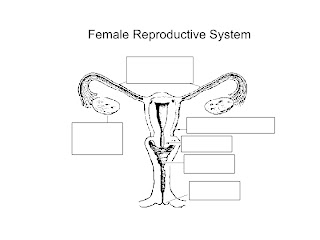Our Talented Brain NAME:
1. Humans are very ______________________________ to other animals. The fundamentals of our respiration, digestion, circulation and reproduction are the same. Where we differ is in our ability to _________________________________________.
2. The rich variety of our lives comes from our exceptional ___________________________, __________________________________ and __________________________________.
3. The five senses by which we take information into our brains are a) ___________________________, b) ___________________________, c) ___________________________, d) ___________________________and e) __________________________________.
4. The simplest earliest animals had brains that dealt almost entirely with the senses of ___________________________ and ___________________________.
5. As life evolved the brain included more layers to process more information involving ___________________________ and ___________________________.
6. Deep inside our brains are areas that control our most primitive sensations – thirst, hunger, sex, fear and aggression. These primitive responses to our environment have helped animals including humans ___________________________.
7. The instinct for self-preservation, the drive to reproduce and our fight or flight response to dangerous situations – all of these are shared with animals.
8. What separates us from animals is our ability to make ___________________________ between various ideas in ways that animals cannot – and that can be traced back to the way our brain structure differs from theirs.
9. A human’s ability to ___________________________ the information provided by different senses – for example sight and touch – is beyond most animals.
10. Humans can very easily connect a picture of an object or the sound that it makes with the ___________________________ . Humans can also connect symbolic sounds (music and language) and symbolic sights (images and written words) with ___________________________ objects. Other animals cannot do this as easily as we can.
11. Many animals (Crows, monkeys, apes, whales, dolphins, porpoises, etc.) can understand ___________________________ representations (pictures, words, music, etc.) but none can with the complexity of human beings.
12. Animals learn to ___________________________ – including human beings. But humans learn many things that seem to have nothing to do with survival.
13. Animals lack our ability to make “___________________________” connections. The expression we currently use to describe this ability is “lateral thinking”
EXAMPLE #1 of humans making connections-
Animals fear fire.
Humans fear fire BUT use it for heat, to cook, to destroy, to change things, etc.
EXAMPLE #2 of humans making connections-
A basketball through the hoop example: We know that the ball can go through the circle more easily than it can go through the oval, so if we arc the basket ball more when trying to shoot a basketball through a hoop we have a better chance of putting the ball through the hoop. An animal would never be able to make that connection.

MEMORY
14. Our ability to remember things is very different than animals. We have two type of memory. Short-term memory lasts for ________________________ minutes before beginning to fade. Our long-term memory can last for _____________________. Scientists believe that long-term memory causes actual ___________________________ changes in the brain’s structure.
15. There are about ___________________________ brain cells in the human brain.
16. Every healthy brain cell connects with other brain cells through ___________________________. See the illustration below number 13.
17. The average brain cell connects with about ___________________________ other brain cells in directly. Some brain cells connect with as many as _______________________________ other brain cells indirectly.
18. We “file” our memories based on ___________________________ the information was received. Some parts of the brain hold visual memories. Some parts of the brain hold sound memories. Some parts of the brain hold smell memories. Etc. And humans can ___________________________ these memories more readily than animals seem to be capable of doing.
19. The more often we recall something the ___________________________ it will be to remember it in the future. Reading the notes from a class once every evening a week before a test will be ___________________________ effective preparation than reading the notes several times in one night.
LANGUAGE and the BRAIN
20. The left side of the brain and the right side of the brain perform different functions. We have come to know this by studying the effects of brain __________________. Injuries to the _____________________ side of the brain affect our language abilities much more than injuries to our ____________________ side.
Humans can associate or connect seemingly unrelated pieces of information to their benefit. Example #3
IF Falling great distances can kill an animal.
AND Herds of buffalo will stampede away from loud noises and sudden movements.
AND Stampeding buffalo do things one buffalo wouldn’t normally do.
THEN If we stampede the buffalo over a cliff we can kill them and eat them.
21. Play is a testing of skills and abilities that one day MAY be used in a win or lose - ___________________________ or ___________________________ situation. Games can prepare us for ___________________________. Stories, myths and fictions can prepare us for everyday life. Music can help us recognize patterns in ___________________________ – a dangerous animal or a traffic light crossing sound.
Answers
1. similar think
2. memory, intelligence and language
3. sight smell hearing taste touch - no special order
4. smell and taste
5. sight and sound
6. survive
7.
8. connections
9. connect
10. real object real
11. symbolic
12. survive
13. sideways
14. 15 - 20 minutes years physical
15. 100 billion
16. dendrites
17. 60,000 250,000
18. how connect
19. easier more
20. injuries/damage left right
21. life or death combat real life







